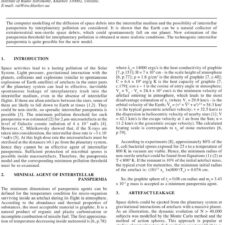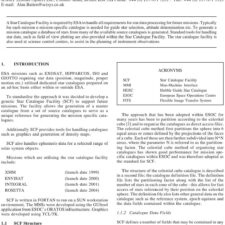Supersonic Axisymmetric Minimum Length Nozzle Conception at High Temperature with Application for Air
£5.00
T. Zebbiche (2010), JBIS, 63, 171-191
Refcode: 2010.63.171
Keywords: Axisymmetric minimum length nozzle, Prandtl Meyer function, high temperature, numerical integration, finite differences method, predictor corrector algorithm, interpolation, stretching function, straight sonic line, calorically imperfect gas, pressure force, mass of nozzle, relative error
Abstract:
When the stagnation temperature of a perfect gas increases sufficiently, the specific heats and their ratio start to vary with this temperature and it is termed a calorically imperfect gas. The aim of this work is to trace the profiles of a supersonic axisymmetric Minimum Length Nozzle which has uniform and parallel flow at the exit section, when the stagnation temperature is accounted for but is still lower than the dissociation threshold of the molecules. The shape of the nozzle is determined as a function of exit Mach number and stagnation temperature. The method of characteristics is applied through a second order finite difference method. The form of the nozzle has a point of inflection and an initial angle of expansion. The comparison is made with the calorically perfect gas. The application is for air.





